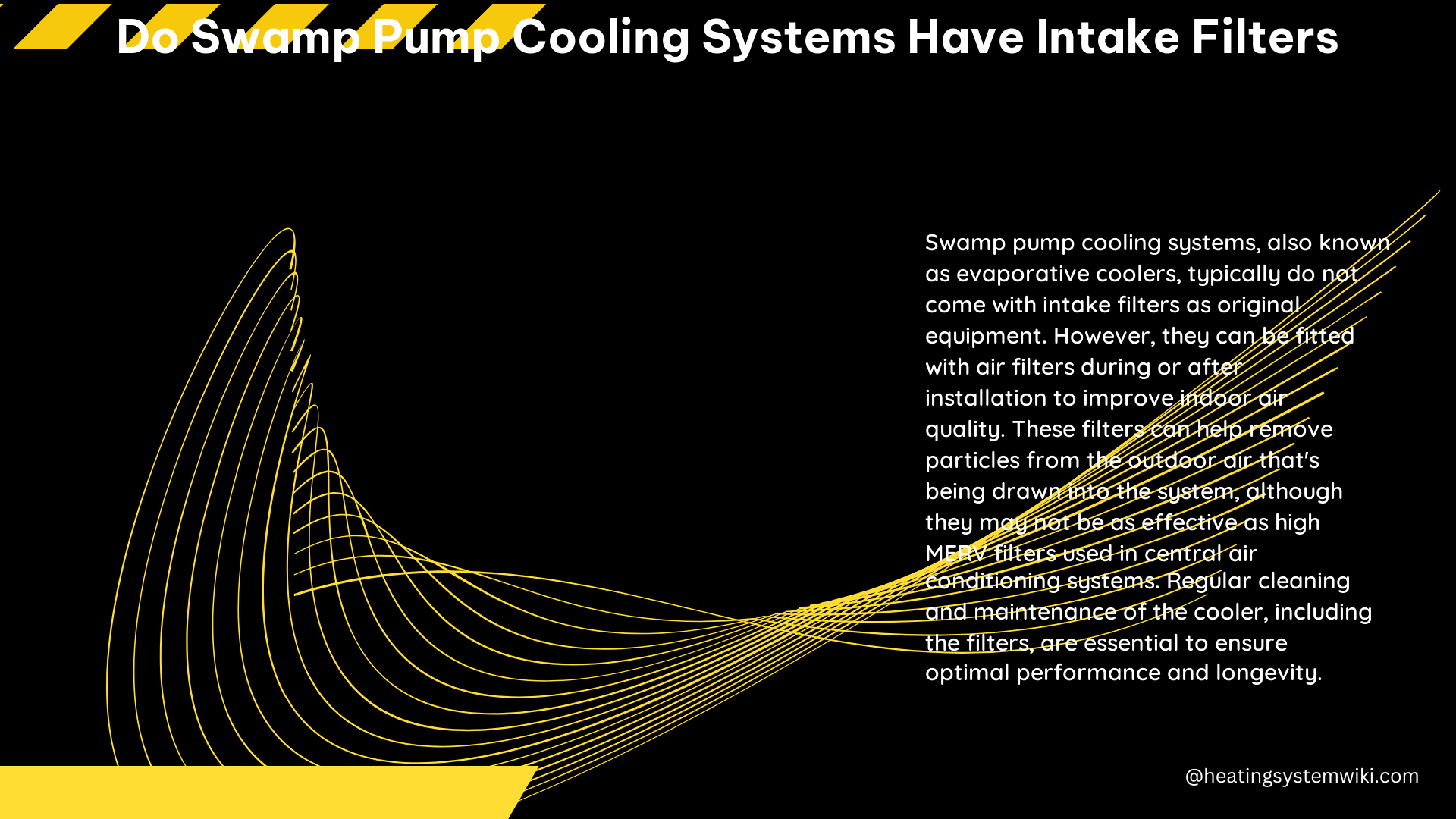Swamp pump cooling systems, also known as evaporative coolers or swamp coolers, do have intake filters, although they are not as advanced as high MERV filters used in central air conditioning systems. These filters are designed to help remove particles from the outdoor air that’s being drawn into the cooler. However, the primary function of swamp coolers is to cool the air through the evaporation of water, and they are not designed to provide the same level of air-cleaning filtration as central air conditioning systems.
Understanding Swamp Cooler Intake Filters
Swamp coolers work by drawing warm, dry air from the outside through water-soaked cooling pads and blowing the damp air into the home. This process reduces the air temperature by 15°- to 40°F-before it is directed into the home. The intake filters in swamp coolers are typically made of a coarse mesh or screen material, with a MERV (Minimum Efficiency Reporting Value) rating of around 4-6.
MERV Ratings Explained
MERV ratings are a measure of a filter’s ability to capture particles of different sizes. The higher the MERV rating, the more effective the filter is at removing smaller particles. Here’s a breakdown of MERV ratings:
| MERV Rating | Particle Size Captured |
|---|---|
| 1-4 | Larger particles (pollen, dust mites) |
| 5-8 | Smaller particles (mold spores, pet dander) |
| 9-12 | Even smaller particles (bacteria, smoke) |
| 13-16 | Smallest particles (viruses, fine dust) |
Swamp cooler intake filters typically have a MERV rating of 4-6, which means they are effective at capturing larger particles like pollen and dust, but they are not as effective at filtering out smaller, more harmful pollutants.
Limitations of Swamp Cooler Filtration

While swamp coolers are less expensive and more energy-efficient than air conditioning in most cases, they do not have adequate filtration systems to filter out harmful pollutants like carbon monoxide, sulfuric acid, pollen, and dust particles, especially during wildfires.
Pollutants Swamp Coolers Can’t Filter
- Carbon monoxide: A colorless, odorless gas that can be deadly in high concentrations.
- Sulfuric acid: A corrosive chemical that can be present in wildfire smoke and industrial emissions.
- Pollen: A common allergen that can trigger respiratory issues.
- Fine dust particles: Tiny particles that can penetrate deep into the lungs and cause respiratory problems.
These pollutants can pose a significant health risk, especially for individuals with respiratory conditions or compromised immune systems.
Improving Swamp Cooler Filtration
To address the filtration limitations of swamp coolers, researchers have been testing new air filtration systems in mobile homes. The Filtration for Respiratory Exposures from Swamp Cooler Air (FRESSCA) project, funded by the Environmental Protection Agency, aims to design, test, and develop an air filtration system that can effectively filter out the smallest pollutants found in wildfire smoke.
FRESSCA Project Objectives
- Design a high-efficiency air filtration system for swamp coolers
- Test the filtration system’s effectiveness in removing pollutants
- Develop a cost-effective and energy-efficient solution for homeowners
This project is a promising development that could significantly improve the air quality in homes with swamp coolers, providing a solution to the filtration limitations of these cooling systems.
DIY Tips for Improving Swamp Cooler Filtration
In the meantime, there are some steps homeowners can take to improve the filtration capabilities of their swamp coolers:
-
Install a High MERV Filter: Consider installing a high MERV filter (e.g., MERV 13-16) on the intake side of the cooler to remove more particles from the outdoor air. Keep in mind that this may reduce the cooler’s efficiency, so it’s important to balance filtration and cooling performance.
-
Regularly Clean and Maintain: Regularly clean and maintain the cooling pads and water tank to ensure the swamp cooler is operating at its best. This can help improve the overall performance and longevity of the system.
-
Upgrade to Advanced Filtration: If available, consider upgrading to a more advanced filtration system, such as those being developed by the FRESSCA project. These systems may provide better protection against harmful pollutants.
By taking these steps, homeowners can help improve the air quality in their homes and mitigate the filtration limitations of their swamp cooler systems.
Reference:
